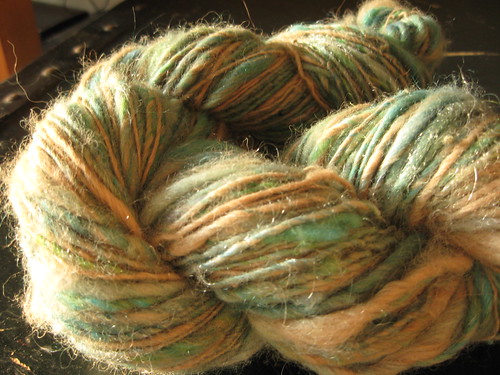Like many people in the US today, I’m huddled indoors trying to stay away from the oppressive cold. Now, living in VA, I know I don’t have it nearly as bad as my family that live up north. Still, generally houses up north are better insulated than the lovely old home Mr. Turtle and I rent. This morning, despite the heater’s efforts, I couldn’t get the upstairs above 62 degrees. Now, with the space heater running and the sun finally shining in the front windows, I’ve gotten the upstairs to a balmy 68 degrees. I’m still wearing a hat and long underwear today, though. And my warmest pair of handknit socks.
Which brings me to a question an old friend and student, Holly, wrote to me just yesterday. She asked,
I’ve knitted a few pairs of socks and really enjoy the technique. When I’ve worn them, they don’t keep my feet warm. My feet are cold all the time. I’ve spoken to other sock knitters and no one seems to have an answer or solution for me. In order for me to wear my lovely hand knitted socks, I have to still wear a “commercial cotton” sock under them and I think that defeats the purpose of making and wearing the hand knitted socks.
I thought this was an interesting question, because I have a mild form of Raynaud’s, which means I have to be diligent about keeping my hands and feet warm. I know exactly what Holly means when only one pair of socks is not enough!
(As a side note, I’m not up to addressing issues of hand/feet being cold for reasons other than the socks not being up to the job. If you have circulation issues, or simply have sweaty feet [damp=cold], I can’t help you. When I went winter camping, we had a good rule: if you’re cold when you go into your sleeping bag, all you’re going to do is be cold in your sleeping bag. The bag insulates you, which means any cold that’s in the bag with you? Will stay there. Same things with hands/feet. If you put cold feet into a pair of socks, they’re still going to be cold.)
I thought it would be helpful to outline and expand my reply to Holly.
When it comes to hand-knit socks being warm enough, there’s a few different strategies and things I would look at to determine the cause of the socks being too cold.
1. First, I would check the gauge of the sock. A lot of patterns are written for a sock to be made in sock weight yarn at 8-8.5 sts per inch (sts/in). For me, that is much too loose of gauge with a sock weight yarn. Normally, with sock weight yarn, I’m working my socks at 9.25-10 sts/in, depending on how lofty the yarn is. Socks that are knit at a tighter gauge hold of to wear and tear longer. More importantly, they close the “holes” between the stitches, keeping the cold on the outside and the warm on the inside. If you somehow can’t reach a dense gauge in sock weight yarn (which for some people can be hard), think about sizing up the yarn you’re using. Which brings me to my next point….
2. Look at using a denser gauge yarn – that is, a heavier weight. Sometimes sock weight yarn isn’t thick enough to insulate your feet. When it’s wintertime, many people wear thicker socks – so it doesn’t hurt to have some thicker handknit socks too. Mr. Turtle’s two favorite pairs of handknit socks are made in a superwash wool and nylon blend. One of them is made with a DK weight yarn, the other is made with a light worsted yarn. Both of them are closer to hiking socks than anything else. Thicker yarn means the fabric will be thicker, which means there’s a larger layer between you and the world. It insulates you more.

3. Speaking of insulation, take a look at what the yarns the socks you are making are made of. I’ve talked before about how important fiber content in yarn is to the finished project, and this is especially true when you need something warm. You may want to look at yarns that have some cashmere, mohair, angora or mohair blended with them. The 5-15% of a warmer fiber can make a big difference. I love Mountain Color’s Bearfoot, which has 60 % Wash wool, 25% Mohair, 15% Nylon. I think it’s the perfect blend of warm and durable – the nylon and the mohair make a big difference. My mother, when I made a pair, put them on and went “Oh, they’re warm.” She kept those, I made another pair for myself. Often, warmer fibers like those stated above can be a bit more delicate (with the exception of some mohairs), so make sure there’s some nylon blended in, both for durability and to prevent felting.
4. My final solution would be to look at the type of patterns you work on your socks. Lacework, obviously, is going to be less warm. You’re adding holes to the work! Stranded colorwork (or some slip stitch patterns), are your best bet for a warmer fabric. Stranded colorwork makes two layers of fabric: the stockinette layer, and the layer that’s in the back, where the yarns are floating. If you keep the floats short (under ½”), you can get a very dense fabric. You sacrifice some flexibility, but the socks end up being quite a bit warmer.
Love socks? Check out my sock patterns on Ravelry!






